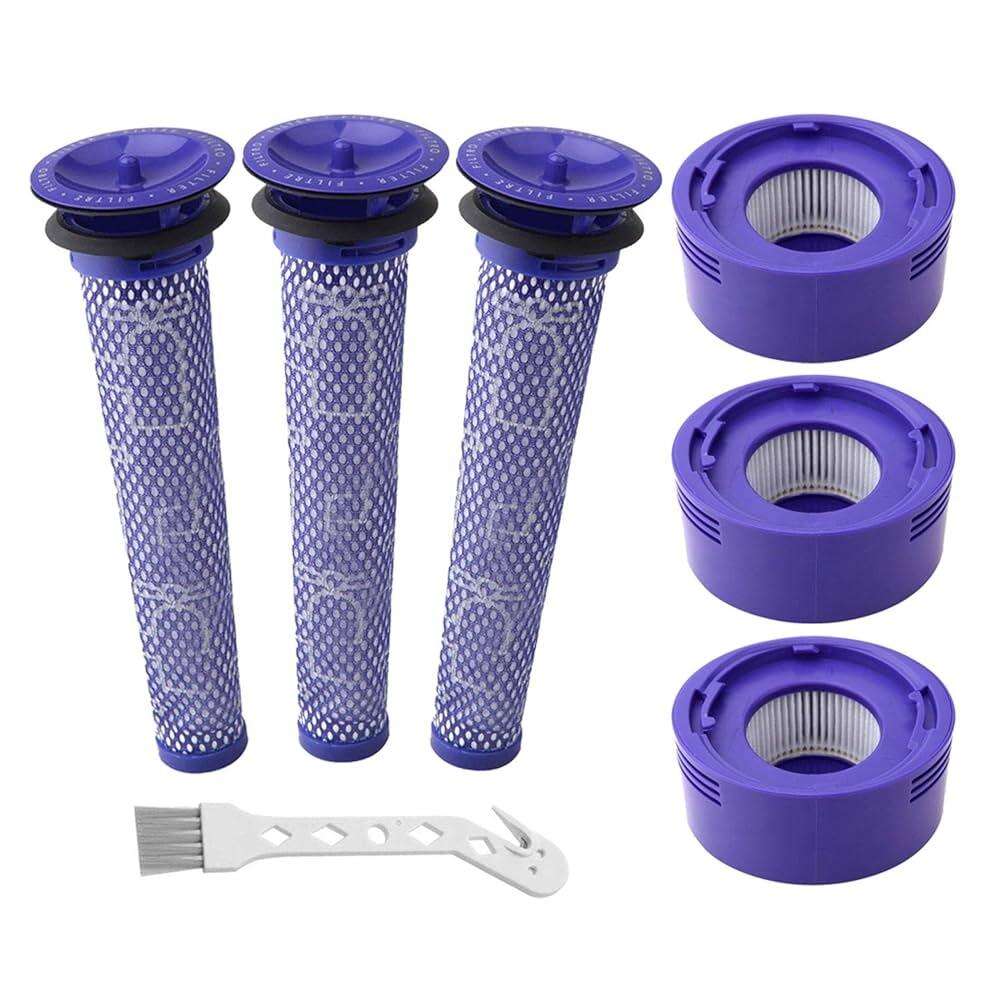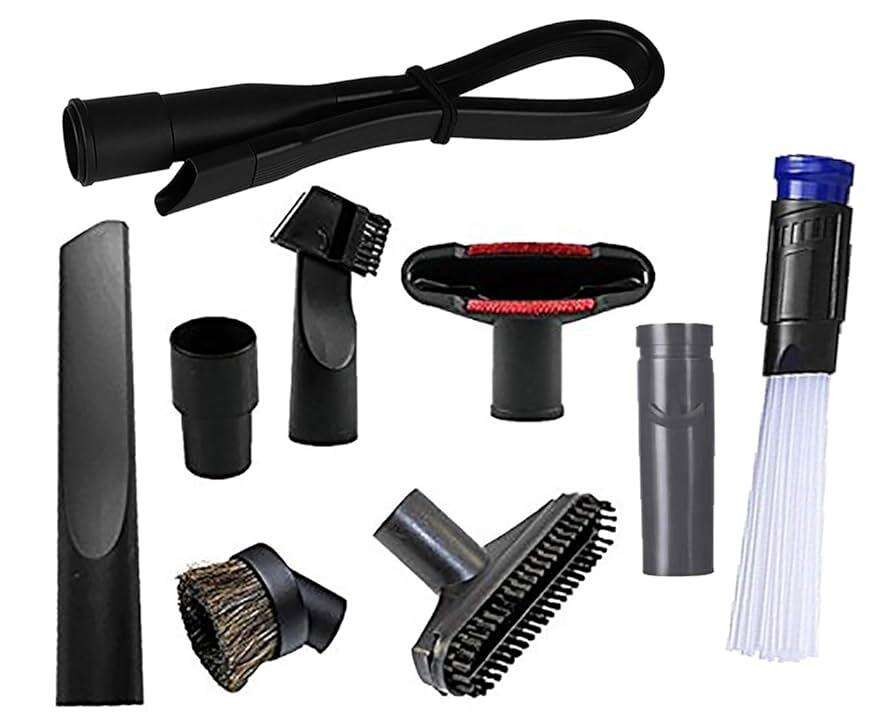Essential Guide to Selecting Quality Vacuum Components
When it comes to maintaining your vacuum cleaner's performance, selecting the right vacuum replacement parts is crucial for ensuring long-term reliability and optimal cleaning results. Whether you're dealing with a residential or commercial vacuum cleaner, understanding how to choose quality components can save you time, money, and frustration in the long run. This comprehensive guide will help you navigate the world of vacuum replacement parts with confidence and make informed decisions that extend your vacuum's lifespan.
Understanding Vacuum Replacement Components
Common Types of Replacement Parts
Vacuum cleaners comprise numerous components that may need replacement over time. Filters, belts, brushrolls, and hoses are among the most frequently replaced parts. Each component plays a vital role in your vacuum's operation, and using high-quality vacuum replacement parts ensures consistent performance. For instance, filters trap dust and allergens, while belts drive the brushroll mechanism for effective carpet cleaning.
Understanding the function of each part helps in recognizing when replacement is necessary. Signs of wear, such as decreased suction power or unusual noises, often indicate that certain components need attention. Regular inspection of these parts can prevent more serious issues from developing.
Original vs. Aftermarket Parts
When selecting vacuum replacement parts, you'll encounter both original equipment manufacturer (OEM) and aftermarket options. OEM parts are made by the vacuum's manufacturer and guarantee perfect compatibility, while aftermarket parts offer cost savings but require careful verification of specifications.
While OEM parts typically cost more, they often provide better fit and durability. However, quality aftermarket parts from reputable manufacturers can offer comparable performance at a lower price point. The key is researching the manufacturer's reputation and checking customer reviews before making a decision.
Factors Affecting Part Selection
Material Quality and Durability
The material composition of vacuum replacement parts significantly impacts their longevity and performance. High-grade plastics, reinforced rubber, and corrosion-resistant metals typically offer better durability than cheaper alternatives. When examining parts, look for signs of quality such as smooth finishes, consistent coloring, and precise manufacturing.
Premium materials may cost more initially but often prove more economical over time by requiring less frequent replacement. Additionally, better materials tend to maintain their performance characteristics longer, ensuring consistent cleaning efficiency throughout their lifespan.
Compatibility and Specifications
Ensuring proper fit and compatibility is crucial when selecting vacuum replacement parts. Each vacuum model has specific requirements for components like filters, bags, and belts. Using incompatible parts can lead to poor performance or even damage your vacuum cleaner.
Always verify the exact model number of your vacuum and cross-reference it with the replacement part specifications. Many manufacturers provide online tools or guides to help identify the correct parts for your specific model. Taking time to confirm compatibility can prevent costly mistakes and ensure optimal performance.

Maintenance Best Practices
Installation Guidelines
Proper installation of vacuum replacement parts is essential for optimal performance and longevity. Following manufacturer guidelines and using the correct tools helps prevent damage during installation. Take time to read instructions thoroughly and, if available, watch installation videos for your specific model.
Before installing new parts, clean the surrounding areas thoroughly to remove dust and debris that could affect performance. Proper alignment and secure fastening of components help prevent premature wear and ensure efficient operation.
Preventive Maintenance Schedule
Implementing a regular maintenance schedule helps extend the life of vacuum replacement parts and identifies potential issues before they become serious problems. Different components have varying lifespans and maintenance requirements. For example, filters may need monthly cleaning or replacement, while belts might last several months to a year depending on usage.
Keep track of when parts were last replaced and monitor their condition regularly. This proactive approach helps optimize the timing of replacements and prevents unexpected breakdowns that could disrupt your cleaning routine.
Cost Considerations and Value Analysis
Long-term Investment Strategy
When evaluating vacuum replacement parts, consider the total cost of ownership rather than just the initial purchase price. Higher quality parts may cost more upfront but often provide better value through extended service life and improved performance. Calculate the cost per use to better understand the true value of different options.
Consider creating a maintenance budget that accounts for regular replacement of wear items. This helps spread costs over time and ensures you can afford quality parts when needed. Remember that skimping on quality can lead to more frequent replacements and potentially damage other components.
Warranty and Support Services
Quality vacuum replacement parts often come with warranties that protect against defects and premature failure. Review warranty terms carefully and consider them as part of the overall value proposition. Some manufacturers offer extended warranty options or customer support services that can provide additional peace of mind.
Keep documentation of purchases and warranty information for future reference. This can be valuable if you need to make warranty claims or seek technical support for installation or troubleshooting.
Frequently Asked Questions
How often should I replace vacuum parts?
The replacement frequency varies by component and usage. Filters typically need replacement every 3-6 months, belts every 6-12 months, and brushrolls every 1-2 years with regular use. Monitor performance and wear indicators to determine optimal replacement timing for your specific situation.
Are generic vacuum replacement parts safe to use?
Generic parts can be safe and effective when purchased from reputable manufacturers who maintain quality standards. However, verify compatibility and check reviews before choosing generic options. Consider the potential impact on your vacuum's warranty and performance when making this decision.
What signs indicate I need to replace vacuum parts?
Common indicators include decreased suction power, unusual noises, visible wear or damage, and reduced cleaning effectiveness. Regular inspection of components can help identify wear before it affects performance. When in doubt, consult your vacuum's manual or contact the manufacturer for guidance.

